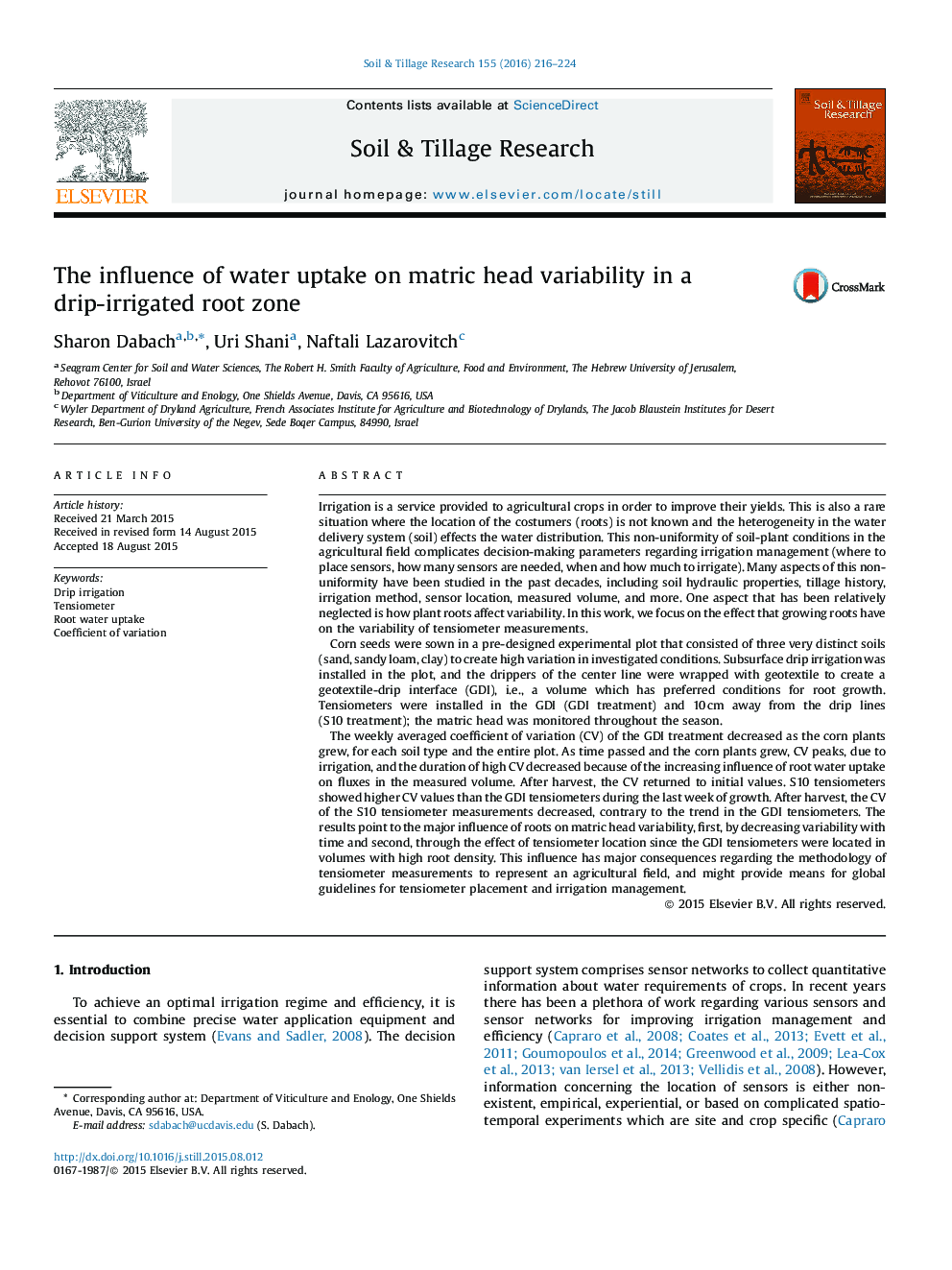| کد مقاله | کد نشریه | سال انتشار | مقاله انگلیسی | نسخه تمام متن |
|---|---|---|---|---|
| 305478 | 513031 | 2016 | 9 صفحه PDF | دانلود رایگان |
• We applied a synthetic material around subsurface irrigation drip lines (GDI).
• Root growth reduced matric head (Ψ) variability of tensiometers in the GDI.
• Ψ variability of GDI tensiometers was lower than that of soil tensiometers.
• Measuring Ψ in the GDI reduced number of tensiometers required in the plot.
Irrigation is a service provided to agricultural crops in order to improve their yields. This is also a rare situation where the location of the costumers (roots) is not known and the heterogeneity in the water delivery system (soil) effects the water distribution. This non-uniformity of soil-plant conditions in the agricultural field complicates decision-making parameters regarding irrigation management (where to place sensors, how many sensors are needed, when and how much to irrigate). Many aspects of this non-uniformity have been studied in the past decades, including soil hydraulic properties, tillage history, irrigation method, sensor location, measured volume, and more. One aspect that has been relatively neglected is how plant roots affect variability. In this work, we focus on the effect that growing roots have on the variability of tensiometer measurements.Corn seeds were sown in a pre-designed experimental plot that consisted of three very distinct soils (sand, sandy loam, clay) to create high variation in investigated conditions. Subsurface drip irrigation was installed in the plot, and the drippers of the center line were wrapped with geotextile to create a geotextile-drip interface (GDI), i.e., a volume which has preferred conditions for root growth. Tensiometers were installed in the GDI (GDI treatment) and 10 cm away from the drip lines (S10 treatment); the matric head was monitored throughout the season.The weekly averaged coefficient of variation (CV) of the GDI treatment decreased as the corn plants grew, for each soil type and the entire plot. As time passed and the corn plants grew, CV peaks, due to irrigation, and the duration of high CV decreased because of the increasing influence of root water uptake on fluxes in the measured volume. After harvest, the CV returned to initial values. S10 tensiometers showed higher CV values than the GDI tensiometers during the last week of growth. After harvest, the CV of the S10 tensiometer measurements decreased, contrary to the trend in the GDI tensiometers. The results point to the major influence of roots on matric head variability, first, by decreasing variability with time and second, through the effect of tensiometer location since the GDI tensiometers were located in volumes with high root density. This influence has major consequences regarding the methodology of tensiometer measurements to represent an agricultural field, and might provide means for global guidelines for tensiometer placement and irrigation management.
Journal: Soil and Tillage Research - Volume 155, January 2016, Pages 216–224
